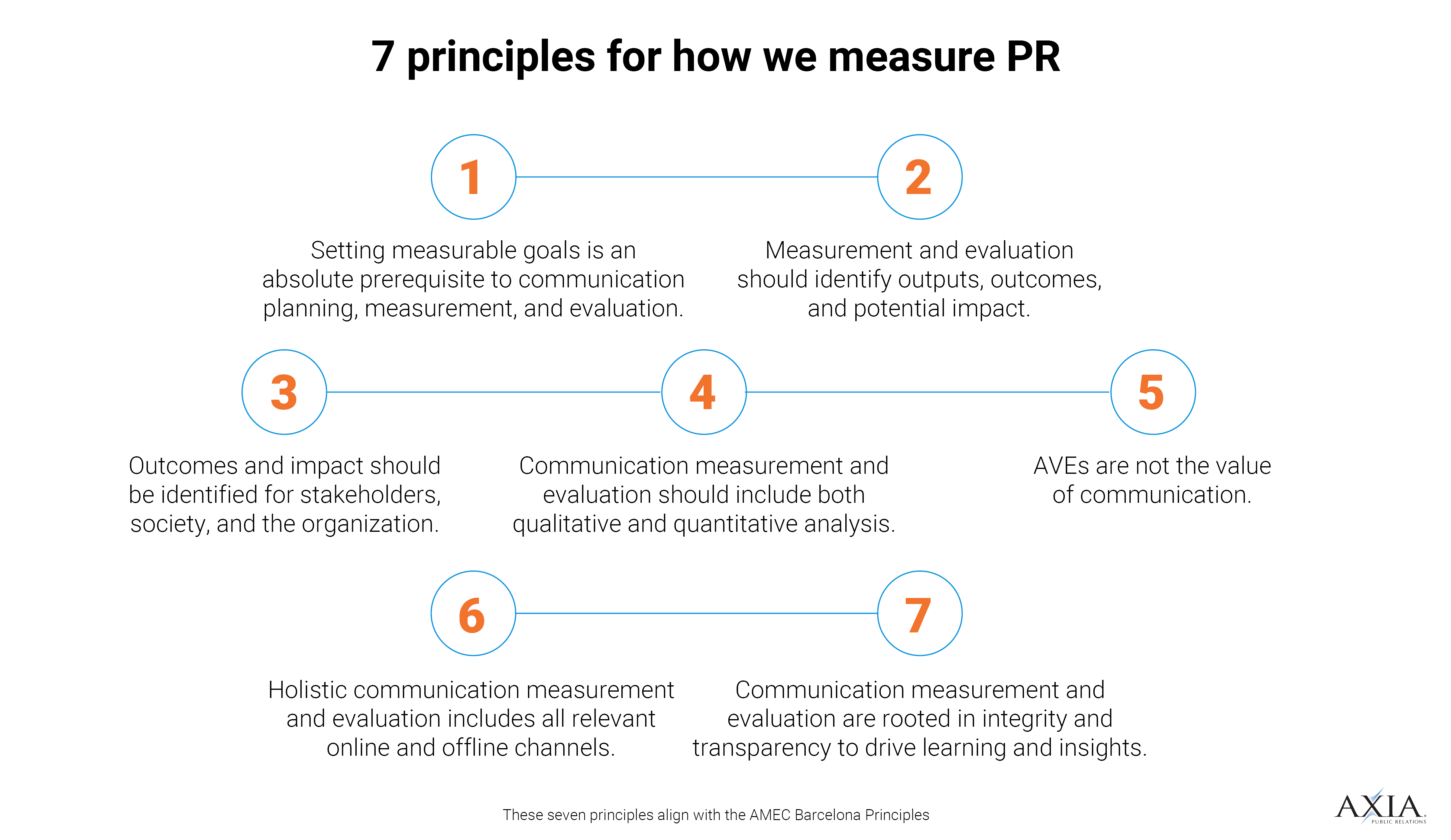 When designing a public relations plan for your company, Axia Public Relations starts with your goals and objectives. Then, we break them down further into inputs and activities. This is the first part of creating an effective PR program for you. We’ve created a scenario around Twidget, a fictional company, to illustrate how this process works and to help you understand what we mean by inputs and activities.
When designing a public relations plan for your company, Axia Public Relations starts with your goals and objectives. Then, we break them down further into inputs and activities. This is the first part of creating an effective PR program for you. We’ve created a scenario around Twidget, a fictional company, to illustrate how this process works and to help you understand what we mean by inputs and activities.
Twidget is beginning a new PR campaign. Its goal is to build awareness of its new product line. Its first S.M.A.R.T objective is to increase sharing of new product line posts on social media platforms by the end of the next quarter to the following:
-
1500 shares per post on Facebook
-
800 shares per post on Twitter
-
3000 shares per post on Instagram
Twidget used previous sharing results from successful launches to determine that these numbers were achievable and meaningful within the first 30 days.
Twidget’s second objective is to increase positive reputation as measured by a Net Promoter Score (NPS) of 20 or greater within 72 hours post-purchase by the end of the next quarter. As part of its strategy behind this objective, Twidget’s PR team intends to measure if there is any correlation between the audience sharing behavior, positive social media sentiment analysis, and sales conversions. Additionally, the team intends to work closely with influencers and other members of the media to align earned media coverage with the new product line.
Inputs: What you need in preparation for communication
Inputs give focus to your plan. To begin, we look at the different publics for your message. Who are they? How do they prefer to receive information, or which channels are most meaningful to them? What do these audiences need and want?
Next, we ask: What are you not doing and what can you do better? To answer those questions, we work with you to do a situation analysis, also called a SWOT analysis. What are the internal factors – the strengths and weaknesses – that are impacting your goals? What do you excel at? What do you struggle to do well? Are there flaws in image, reputation, communication, product, employee relations, or other areas?
Then, we examine external factors – opportunities and threats. Where can your company gain new footholds, emerge as a thought-leader, or fill a product niche? What are the threats to this? Competitors, regulation, changing demands, or something else?
Once we establish all of these factors, we examine them to see which ones we can address through a PR plan in a way that is consistent to your company goals and time-bound objectives.
What resources do we need to prepare and inform our communication to the audiences? What is the budget for these inputs? You must record and agree upon these factors before moving on to the next stage.
In the Twidget example, the two objectives are to increase sharing and realize an NPS score of 20 or greater. What does the team need to make this happen? A list of possible inputs might include the following:
-
Social media accounts on Facebook, Twitter, and Instagram
-
Social media manager
-
Content for social media and people to produce it
-
Program to prompt buyers to submit NPS information
-
Database linkage between buyers and NPS program
-
Analytics capabilities to evaluate NPS data, social media engagement data, and sales data
Activities: Things you do to plan and produce your communication
Activities are the visible actions – the things most people think of when they think of PR. When we create web content and social media posts, when journalists write about your company, and when news shows call on your company’s spokesperson – these are all activities that cultivate relationships and earned, shared, and owned media.
Some activities our fictional company, Twidget, might include:
-
Collecting engagement baselines on current social media accounts
-
Surveys and other forms of research as to audience preferences
-
Social media content (get specific here)
-
Social media boosts
-
Embedding NPS program into retail platform
-
Reaching out to specific influencers
-
Creating a customer follow-up system
-
Creating an evaluation plan and protocol to measure results

Axia Public Relations approaches PR from a broad perspective. Our years of experience have shown that in order to provide the most effective service possible, we need a full picture of your company to develop an honest and comprehensive plan built around your needs. Data informs that plan, and data allows us to evaluate that plan’s efficacy for the absolute best use of your time and resources.
If you would like to learn all about measuring what matters in your communication efforts, watch our PR Measurement Webinar.
Clients love Noell’s high tech PR and instructional design experience. She earned her Master of Science in information technology management and business analytics from University of North Carolina. Noell has worked with Axia since November 2017.
Featured image credit: 123rf.com
Topics: measurement, earned media

Comment on This Article